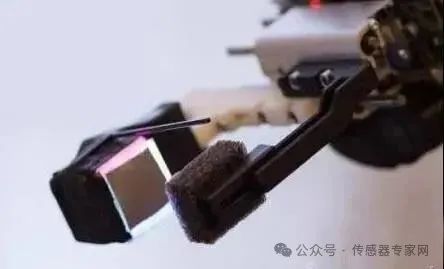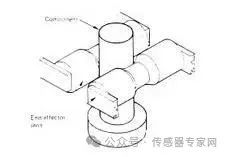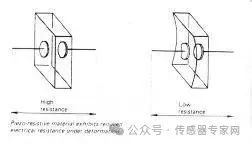
For more in-depth information, reports, and knowledge about sensor technology, sensor testing technology, IoT sensor technology, etc., please follow the Sensor Expert WeChat public account and set it as a star to view past content.

01 Proximity Sensing
Proximity sensing typically means detecting:
a. The presence of an object.
b. The size or simple shape of the object.
Proximity sensors can be further divided into contact or non-contact, as well as analog or digital during operation. The choice of sensor depends on physical, environmental, and control conditions. These include:
Mechanical:
Any suitable mechanical/electrical switch can be used, but since operating mechanical switches requires a certain force, miniature switches are commonly used.
Pneumatic:
These proximity sensors operate by disrupting airflow. Pneumatic proximity sensors are examples of contact sensors. However, these products cannot be used for lightweight components that may be blown away.
Optical:
In its simplest form, optical proximity sensors operate by breaking a light beam that falls on a photosensitive device such as a photodiode. These are examples of non-contact sensors.
It is worth noting that the lighting environment for these sensors must be handled with care. For example, optical sensors may be obscured by flashes during arc welding, and dust and smoke in the air may hinder light transmission.
Electrical:
Electrical proximity sensors can be contact or non-contact. Simple contact sensors operate by completing an electric circuit between the sensor and the component. Non-contact electrical proximity sensors rely on induction principles to detect metals or capacitive methods to detect non-metals.
Range Sensing:
Distance sensing involves detecting how close or far the component is from the sensing position, although they can also be used as proximity sensors. Distance or range sensors use non-contact analog techniques. They measure short distances from a few millimeters to hundreds of millimeters using capacitive, inductive, and magnetic technologies. For longer distance sensing, various types of emitted energy waves (e.g., radio waves, sound waves, and lasers) are used.

02 Force Sensing
There are six types of forces that may need to be sensed. In each case, the application of force can be static (stationary) or dynamic. Force is a vector, as it must specify both magnitude and direction simultaneously. Therefore, force sensors operate analogously and are sensitive to the direction of their application. The six types of forces are:
① Tension
② Compression
③ Shear
④ Torsion
⑤ Bending
⑥ Friction
There are various technologies available for sensing force, some direct and some indirect.
Tensile Force:
Can be determined by strain gauges, which show changes in their resistance as length increases. The resistance changes measured by these gauges can be converted into force, making them indirect devices.
Pressure:
Can be determined by devices called load cells, which operate by detecting changes in battery size under compression load, or by detecting increases in pressure inside the battery under load, or by changes in resistance under compression load.
Torsion:
Can be viewed as a combination of tensile and compressive forces, thus a combination of the above technologies can be adopted.
Friction:
These involve situations where motion needs to be restricted, hence friction can be indirectly detected using a combination of force and motion sensors. For example:

03 Tactile Sensing
Tactile sensing refers to sensing through touch. The simplest type of tactile sensor uses a simple array of touch sensors arranged in rows and columns, commonly referred to as matrix sensors.
Each individual sensor is activated when it comes into contact with an object. By detecting which sensors are active (digital) or the magnitude of the output signal (analog), the imprint of the component can be determined. This imprint is then compared with previously stored imprint information to determine the size or shape of the component.
Currently, mechanical, optical, and electronic tactile sensors have been implemented.

04 Thermal Sensing
As part of process control or as a safety control measure, thermal sensing may be required. There are various methods to choose from, primarily depending on the temperature to be detected.
Some common methods include: bimetallic strips, thermocouples, resistance temperature detectors, or thermistors. For more complex systems involving low-level heat sources, infrared thermography can be used.
05 Acoustic Sensing (Hearing)
Acoustic sensors can detect and sometimes differentiate between different sounds. They can be used for voice recognition to issue verbal commands or identify abnormal sounds, such as explosions. The most common acoustic sensor is the microphone.
In industrial environments, a significant issue with acoustic sensors is the high level of background noise.
Of course, we can also simply adjust acoustic sensors to respond only to certain frequencies, enabling them to distinguish between different noises.
06 Gas Sensing (Smell)
Gas or smoke sensors sensitive to specific gases rely on chemical changes in the materials contained in the sensor, which produce physical expansion or generate enough heat to trigger switching devices.
07 Robotic Vision (Sighting)
Vision may be the most active area of current research in robotic sensory feedback.
Robotic vision refers to capturing images in real-time through some camera and converting that image into a form that can be analyzed by a computer system. This conversion typically involves transforming the image into a digital field that the computer can understand. The entire process of image capture, digitization, and data analysis should be fast enough for the robotic system to respond to the analyzed image and take appropriate actions during task execution.
The refinement of robotic vision will unleash the full potential of artificial intelligence in industrial robots. Its applications include detecting presence, location, and movement, recognizing and identifying different components, styles, and features.
However, even the simplest visual technologies require substantial computer memory and may require considerable processing time.
Starred content = content you care about, according to the WeChat public account recommendation guidelines, if you do not set the Sensor Expert WeChat public account homepage as a star, you will not be able to receive the latest news from the sensor industry in a timely manner!
Source: Precision Machinery Quality
Disclaimer:Reproducing this article is intended to convey more information. If there are any errors in source attribution or if your legal rights have been infringed, please contact us, and we will promptly correct or delete it. Thank you.
-
China’s Sensors Depend on You! Summary of Sensor Research Information from 30 Top Universities -
Finally Understood: Modern Warfare is All About Sensors -
China’s Chip Tycoon Comes from Sensors -
Woke Up to Find Chinese Companies Can’t Design Sensors?!







